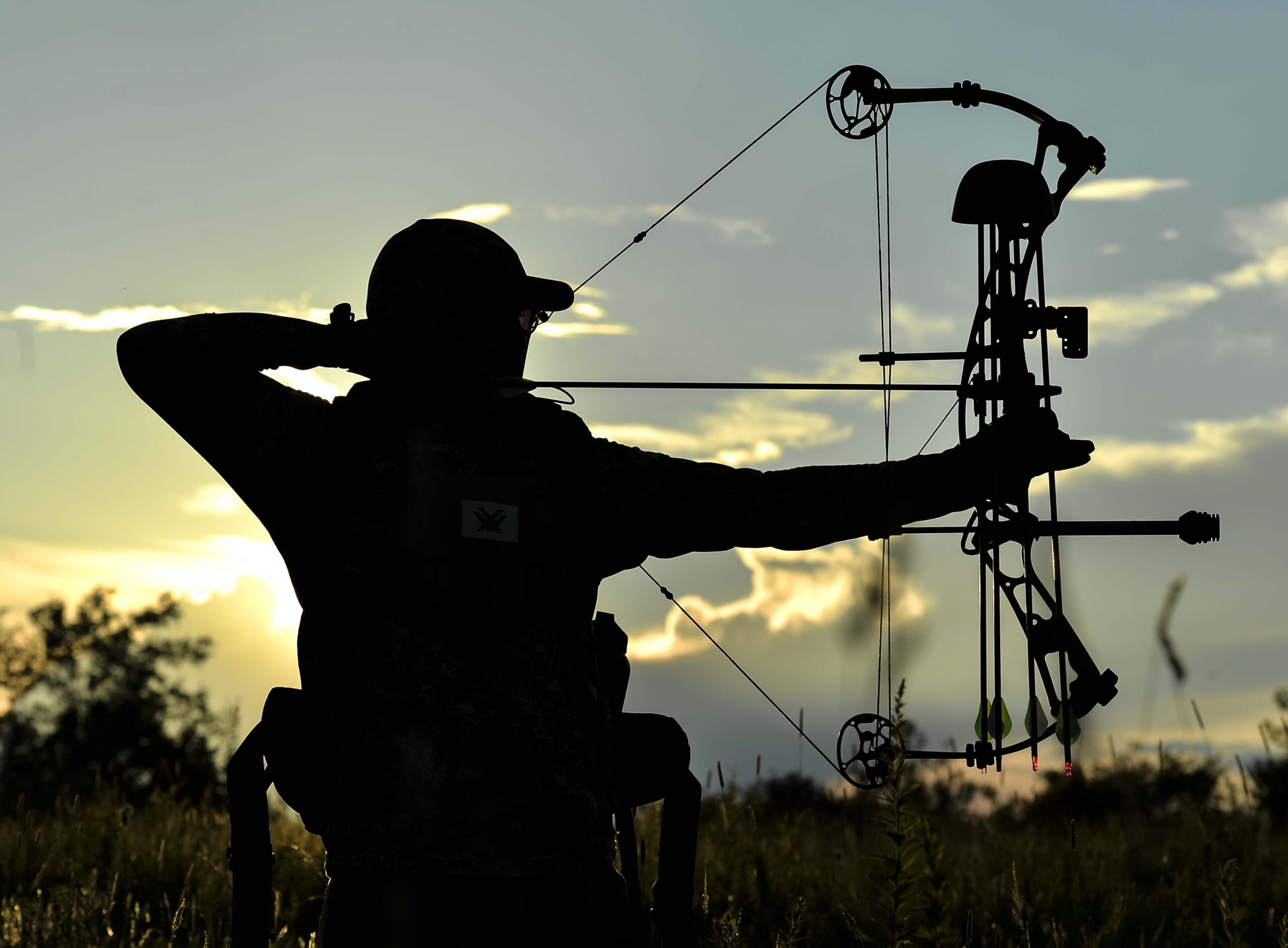MOGADORE, Ohio. – It’s no surprise that crossbow hunting isn’t incredibly popular among American hunters, especially those in West Virginia. Coming from someone who shoots both a crossbow and a compound, I find things to like about both. But this isn’t a story about my experiences, but rather about a company that’s helped define crossbows and crossbow hunting for a new group of folks.
However, if you are new to hunting or seeking to expand their knowledge, embarking on a hunting trip with expert experiences from GunsonGuidingOutfitting can be an ideal way to get started. The guidance and skill of experienced hunters can make all the difference, whether you’re looking to hunt with a crossbow or a traditional rifle. Their knowledgeable guides not only assist with tracking game but also teach the finer points of safety, technique, and strategy, ensuring that beginners are well-prepared for a successful hunt.
TenPoint, a 27-year-old company based out of Mogadore, Ohio, has taken the lead in crossbow manufacturing, stating that they produce “world-class” bows for all levels of hunters, from children to professionals. They design, build and test their crossbows in the United States, too, which gives them an edge on other companies. Further, the company designs both high-quality and entry-level bows, which gives buyers plenty of options from $459-899 for their Wicked Ridge crossbows, up to $2,949 for their top-of-the-line TenPoint brand Vapor RS470. But while an influential company in the crossbow world, it isn’t trying to tell hunters what’s right or wrong, but rather is trying to change the mindset around this method of hunting – even if it’s incremental year-by-year.
“There’s a cultural element to everything but especially for hunting,” Bryan Zabitski, Marketing Coordinator of TenPoint said. “We can be, as human beings, very traditional about aspects of our culture. One of the most difficult things is experiencing a cultural shift. It all boils down to, ‘What’s the definition of a bow and arrow.’”
Without beating around the bush, many will say crossbows aren’t actual bows and therefore don’t belong in the archery season, but recently the Archery Trade Association backed the new format, stating that it “believes that crossbows are viable shooting and hunting equipment that provides an opportunity for a segment of America’s hunters and recreational shooters.”
“The Archery Trade Association defined [a bow] as it had to have limbs, a string, a riser, and the only propulsion the arrow can have comes from the energy stored in the limbs and string,” Zabitski said. “They didn’t say anything about you had to have any certain kind of release, they didn’t say it couldn’t be mounted to a stock.”
Though it has been a slow process since the first states removed restrictions in 2003, the addition of crossbows to the list of taxable equipment under the Pittman Robertson Act is what set things in motion. Now, 28 states including West Virginia allow the use of crossbows in archery season to some degree.
“When it’s proposed [for crossbows to be added to the archery season], it’s generally opposed by members of state bowhunters organizations,” Zabitski said, “which is kind of funny because we wouldn’t expect them to be the resistance to adding another weapon to be able to hunt with. Part of the reason for that is the cultural act of bowhunting for them has a certain definition and part of those organizations were founded on cherishing that shared cultural experience. And for them, holding the string is the key.
“There’s a lot of pride in learning your weapon and how to shoot your weapon. If you’re shooting a vertical bow, there’s a lot of work involved. And I think these organizations look at crossbows and see them as cheating, not having to practice with it or not having to know it as well as you do a compound or recurve bow. By shooting a bow and arrow they’re tapping into a cultural activity that goes back thousands of years. And so they see our crossbows come along as a threat to this culture.”
So what’s the draw to crossbows? While they were the poster child of the R3 Movement (Recruitment, Retention, Reactivation) years ago as a means to boost license sales, that never panned out as some had hoped. There’s no data to show an overwhelming amount of success with that, but Zabitski looks to break down the concept of R3 in another way and just focus on the first and second points.
When it comes to recruitment, Zabitski notes that crossbows are great to get children involved. While we were growing up and dreamed of our first rifle or compound bow, now crossbows can be added to the list of how to encourage youth to begin hunting. Kids don’t have to worry about the recoil and noise associated with rifles or shotguns – something that does affect some youngsters – and can learn proper shooting methods with a crossbow because of this.
“I hear a lot of parents say, ‘My child never fired a gun before we got the crossbow and my child was able to learn trigger control and trigger pull and then I just got them their first .22 rifle,’” Zabitski said. “Crossbows are an excellent way to introduce children, but as a manufacturer, I don’t [expect] that a child who starts with a crossbow will shoot one their entire life. That crossbow for that child is the weapon that allows them to get into the field and learn the hunting aspect, but once they get to 14, 15, 16 years old and they can pull back the minimum draw weight, chances are good by peer pressure we’ll lose them as customers. So it’s a great way to teach them and to get them into the woods.”
The other group that benefits from crossbows are those who can’t draw a compound or recurve back anymore, like an elderly or disabled hunter. There are cases, however, where some people refuse to move on from their traditions, which Zabitski understands, but does disagree to a degree.
“The ones that are amazing to me are the ones that are so committed to it they’ll stop hunting. That’s the part I don’t get because then that makes me wonder, what was the part of it you loved most? Was it the hunting part or was it you hunting with your weapon? It was obviously the latter because if you love hunting you’ll still go out and enjoy it,” he said. “Normally you’d lose those people from the hunting world,” Zabitski said. “You don’t even have to be an old man, you could have a work accident or fall out of a tree stand hunting with your compound bow, and your shoulder is now destroyed for life. So at 35, you’re going to give up hunting altogether?”
Zabitski wanted to be clear – he isn’t a crossbow sycophant. He hunts with both a compound bow and a crossbow in Ohio, one in a long list of hunters who use both platforms. But crossbows also have a personal meaning to him: With crossbows, he can have three generations of hunters out at the same time.
“My dad has a bad rotator cuff in his right shoulder, and he’d have to sit in a camper all day [if we went out] during archery season,” he said. “I’m a dad. I have two kids. And I need to get a piece of archery equipment that I can use, but I can also use it with my family because I want to take my children out early in the fall so they have an enjoyable hunting experience. Crossbows unite multiple generations in the same season in the same places. Here you go: I go out here in Ohio, my dad has a crossbow and is able to come and be part of the hunting camp and my children are able to use my crossbow. So I’ve been able to keep three generations together and have that cultural hunting experience because all three of us groups are able to use the same weapon. I don’t think that part of it can be stressed enough.
“Crossbows are helping to bridge this gap. In most cases, I’d say [users] will be older folks, but we have a lot of people who come back from foreign wars that are injured and crossbows are their only way of getting back out into the archery field. If we want to be so puritanical about archery hunting that it can only be this narrow group of weapons, we will destroy the sport.”
Myth buster, inclusion and innovation
Hang around hunters long enough and you’ll hear things that range from eyebrow-raising to downright crazy, such as the old wives’ tale that you can identify the sex of a deer by looking at its scat or that drinking your urine in a survival situation is safe (it isn’t). So it goes without saying that when something comes along that is perceived to threaten hunting culture to any degree, misinformation will be spread.

“There’s a lot of myths that get put out,” Zabitski said. “[Some are] that crossbow hunters don’t shoot accurately, or that crossbow hunters don’t learn hunting ethics. Part of the learning process you go through with a vertical bow is learning how close you need to be to your prey to deliver a kill shot. Traditional bowhunters are concerned that there will be untrained hunters grabbing crossbows off the shelf, never shooting them or knowing where they hit and that crossbows mean you somehow use your archery craft less.”
Zabitski dispelled all of this, noting that what it boils down to is that a hunter, whether using a gun or bow platform, has to have the same level of basic knowledge to harvest an animal.
“It doesn’t matter what weapon you use if you don’t know how to hunt, one won’t give you an advantage over the other,” Zabitski said. “When you choose a weapon, you take on the responsibility to learn that weapon, its ability and its limitations.”
Zabitski then recalled a study done by Wisconsin on the effects crossbows had on archery and gun seasons. They found that crossbows are valuable when it comes to retention.
“Wisconsin bowhunters said that crossbows are destroying any kind of market for vertical bows,” Zabitski said, “or in other words, they were trying to say guys were giving up gun season altogether because they could walk into a store, buy a crossbow and didn’t have to practice, so it made it to where all the bucks were being killed by people shooting crossbows prior to gun season.”
But that state found those who shot crossbows participated in archery season with a vertical bow, as well as gun season. With that increased engagement, the state decided to create a crossbow license, and thus the hunter spends more money that will be filtered into conservation programs.
“In order for our hunting culture to exist in the future, we need to continuously find ways of engaging with people,” Zabitski said. “At best, we’re not going to ever be increasing overall numbers of people participating in hunting but at worst we’re helping offset the losses. This is part of what comes out of this Wisconsin study, hunting in general there’s an overall net loss. What they were able to show is that crossbows don’t counteract the loss, but they help offset it.”
Further, the Wisconsin DNR found that buck success rate was higher for crossbow hunters, but Zabitski noted that correlation does not imply causation – simply put, there are too many factors to point at crossbow hunters killing all the bucks. Maybe they’re better hunters, maybe more bucks’ home ranges are on the pieces of property that hunter is on or maybe it was a stroke of luck.
Zabitski also stressed that crossbow use results in more inclusion compared to traditional archery equipment. There’s no need to custom fit a crossbow like a vertical bow, and, from a kid’s perspective, using a crossbow means they can hunt earlier due to meeting the draw weight requirements set by states. And when you think of a kid, someone with a disability or an elderly person who can’t draw a vertical bow anymore, this is where TenPoint outshines competitors.
The company has designed an ACUdraw system, a mechanical cocking device build into the stock. Some models, like the Wicked Ridge RDX-400, have the ACUdraw PRO, a sled that is built into the stock that someone can release, place on the string and then use a handle to safely cock the bow. On the other hand, the more expensive models, like the Vapor RS470, use the new ACUslide system which is built directly into the trigger mechanism, is easily released, slides down the rail to grab the center serving and is then cocked with a handle in the stock. Another important development TenPoint has made involves the safety aspect of cocking crossbows. Anyone who’s been around one before knows one mistake could lead to a serious injury, so the company developed an anti-reverse mechanism in all the ACU systems that, if you take your hand of the cocking handle, it won’t spin out of control.
Another development of TenPoint’s is the reverse draw system. The reverse draw isn’t left to just the premium bows either – the RDX-400 is an example of what the company calls “the working man’s reverse-draw crossbow.” The system creates more stored power by extending the power stroke, and in the RDX-400’s case, makes it shoot faster, between 380-400 feet per second.
The personal side of crossbows
Zabitski didn’t start hunting with bows, but rather suffered through – and enjoyed – brutal midwestern winters chasing deer during muzzleloader season. Like most hunters who start with rifles, the allure of archery season was too much and he eventually cracked.
“It extended out, by several months, the amount of time I was able to be in the field,” he said. “It made me a better hunter because I was able to hunt deer more in their natural element or their routines. And being able to hunt with a crossbow allowed me to refine my hunting tactics and my abilities as a hunter even further because my shot distance basically shrunk in half.”
Zabitski’s first archery season was 2011, nearly 10 years ago, and about three or four years ago he began hunting with a compound. That has opened him not to just bowhunting, but also bowfishing. And when it comes to the differences for him, he likes to run his compound in the early season and the crossbow when the temperatures begin to drop.
“Once colder weather sets in, and I have more clothes on and a limited range of motion, I use the crossbow. Crossbows have become very compact in recent years, and I’m able to get into smaller spaces than other spaces where I’m unable to then pull the compound bow back,” he said.

He also notes that he believes there’s less that can go wrong with a crossbow shot as opposed to a compound bow. Plus, for him, there’s less movement to spook an animal with a crossbow compared to holding a vertical bow back.
A family man, he hammered home the point of being able to hunt with his dad and children again, which to him is one of the most important advantages of crossbows over vertical bows.
However, through all of this, it’s important to note that personal preference is the main focal point. If someone never wants to pick up a crossbow, they don’t have to and vice versa – if a person only wants to hunt with a crossbow then they shouldn’t face backlash or criticism.
The point of hunting is to provide food for your family, and have stories for the rest of your life of that hunt and the others that came before and will come after it. Hunters pride themselves on supporting individual freedom, and this is no different – even if it goes against the traditions we grew up with. So whether you decide to use that Mathews, Hoyt or Bowtech compound bow or a Wicked Ridge crossbow – or both – enjoy yourself, know your weapon and harvest that animal you’ve had your eyes on.
TWEET @andrewspellman_




